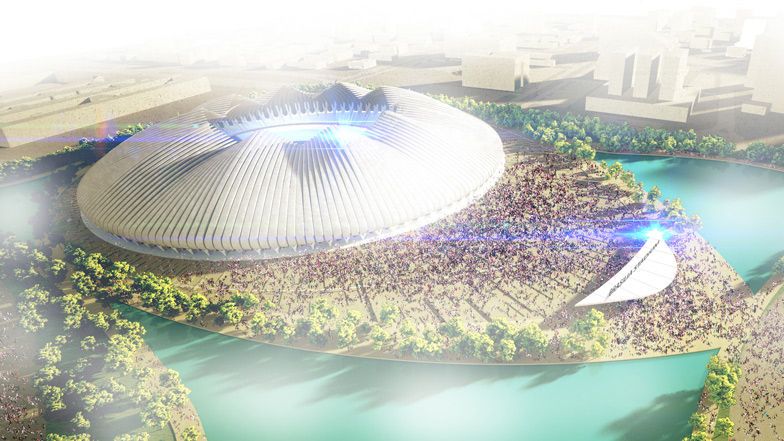
Weston Williamson Designs an Arena with a Responsive Roof
Michael Hines — September 26, 2013 — Lifestyle
References: westonwilliamson & dezeen
Weston Williamson has created an amazing stadium concept that has a roof that can best be described as "alive." The stadium was created for the Brasilia Athletics Stadium Competition in connection with the 2016 Rio Olympic Games. The "alive" portion of the stadium comes in the form of its roof, which would is made up of individual sections that respond to changes in wind and light.
As the light and wind shift, so to would the roof of this stadium. In addition to having a roof that responds to nature, the Weston Williamson stadium concept also features natural ways to stay cool. It would be built on a raised wooden platform surrounded by trees and small pools of water. The trees and wooden platform would provide shade while the water would help absorb heat. The Weston Williamson design is only a concept, but it could very well be a preview into the stadium of tomorrow.
As the light and wind shift, so to would the roof of this stadium. In addition to having a roof that responds to nature, the Weston Williamson stadium concept also features natural ways to stay cool. It would be built on a raised wooden platform surrounded by trees and small pools of water. The trees and wooden platform would provide shade while the water would help absorb heat. The Weston Williamson design is only a concept, but it could very well be a preview into the stadium of tomorrow.
Trend Themes
1. Responsive Architecture - Architecture design that adapts to environmental changes such as wind and light, offering eco-friendly solutions on a larger scale.
2. Sustainable Construction - Using environmentally conscious elements in stadium construction such as wooden platform and small pools of water, limit carbon footprint of sporting arenas.
3. Natural Stadiums - Incorporating natural elements like trees and water bodies for the stadium's design, to create a sustainable and eco-friendly infrastructure.
Industry Implications
1. Sports - Constructing environmentally sustainable stadiums for sports teams and events, to improve their brand's sustainability utilization and reducing landfill waste.
2. Architecture - Designing eco-conscious stadiums that use natural elements in their structure to optimize their environmental footprint and stay ahead in the competitive market.
3. Construction - Constructing eco-friendly stadiums with responsive and sustainable designs that cater to clients' requirement, while considering a carbon-neutral approach to reduce footprint impact.
1.5
Score
Popularity
Activity
Freshness























